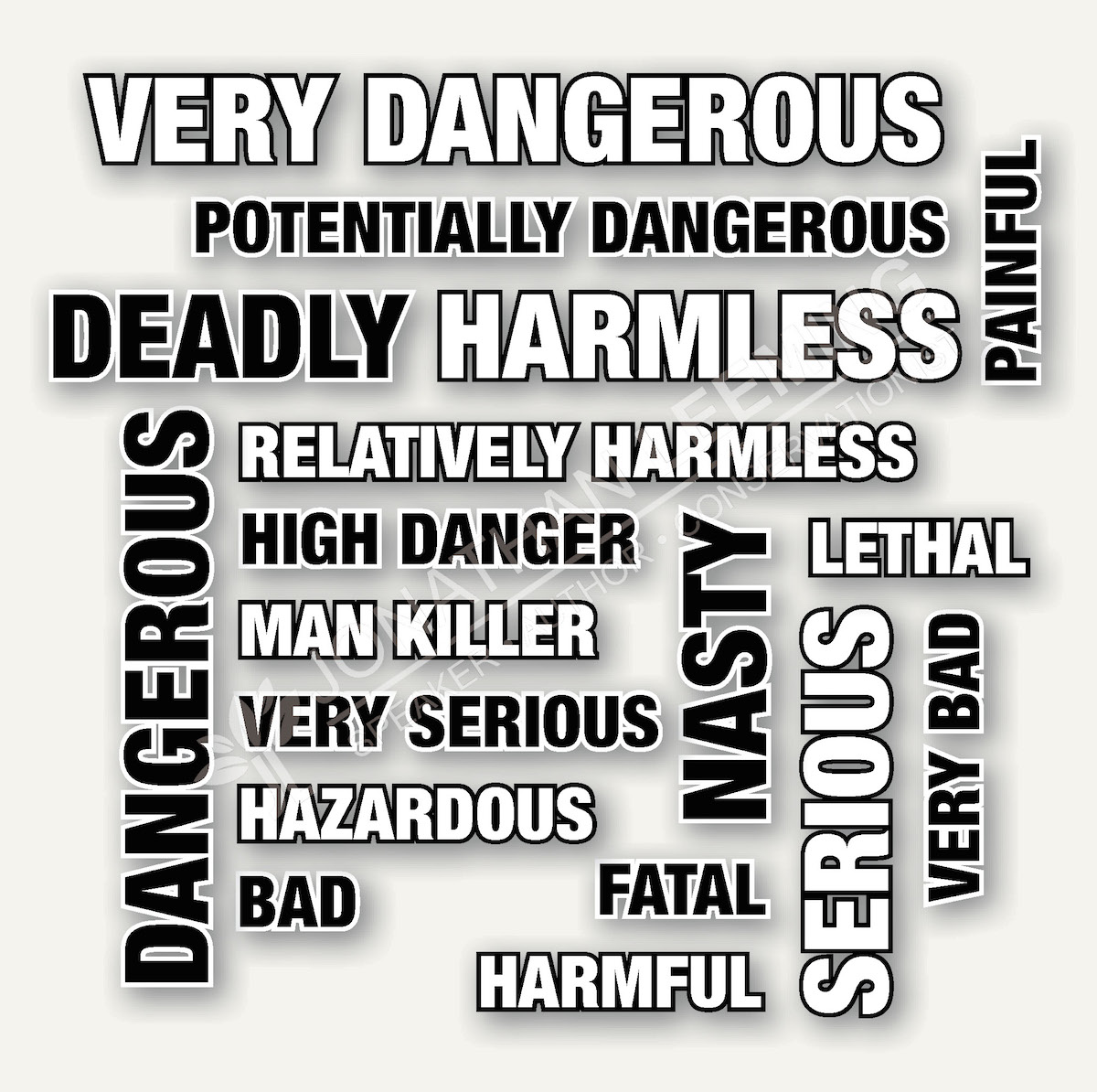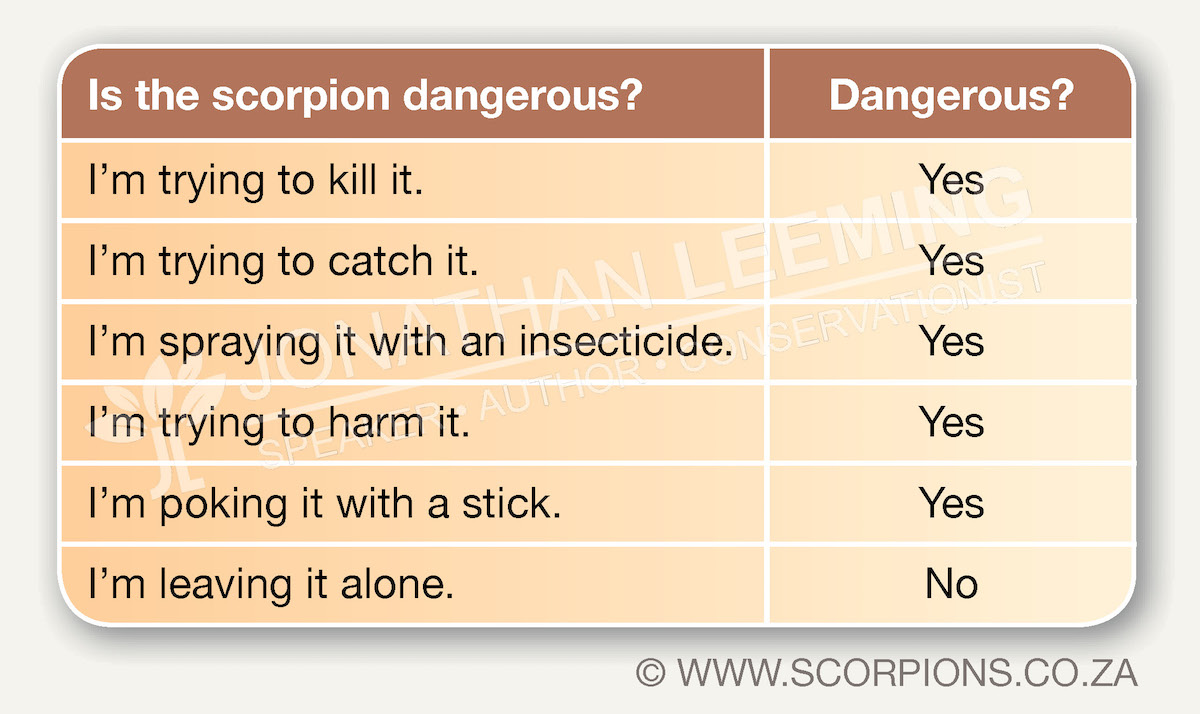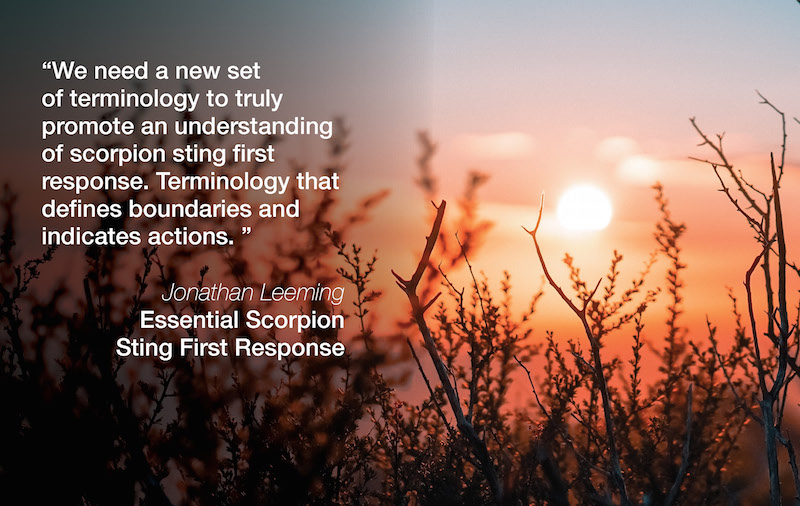In the past, the subject of first response has suffered from distracting and confusing terminology. The human fascination with venomous animals has resulted in them being referred to as relatively harmless, serious, dangerous, nasty and even deadly. What do these terms actually mean and how do they add to our understanding of first response?

What is the difference between harmless, serious, dangerous and very dangerous? According to the Oxford dictionary, potentially deadly is the same as potentially not deadly. How do these terms relate to actions (if any)? Is the situation dangerous because of the animal’s venomous bite or sting, or because of the animal itself?
Something else misleading in the use of these terms is that although the biological action of an animal’s venom is a good indicator of outcomes, there are additional factors that must also be considered.
In the same way that a scorpion is not inherently dangerous, how we interact with that animal increases or decreases the element of danger. If we really want to label things as dangerous, then the act of smoking, driving a car, eating fast food and drinking alcohol are all far more ‘dangerous’ than any venomous animal.

We can appreciate that living and working in areas where scorpions abound poses an increased risk when compared to areas where scorpions are less common. Since there is no way that these scorpion populations can be removed from an area, is there any way to reduce the risk of being stung?
Consider risk in terms of the relationship between the following:
There is no chemical or plant that will discourage scorpions from an area. There are organisations claiming to offer chemicals that deter scorpions, however these chemicals are ineffective and useless.
There will always be a risk of being stung, however there are things in our power that will reduce the risk to an acceptable level comparable to activities that we engage in on a day to day basis.


This content is the product of many hours of work based upon years of experience. If you found it useful or of value, then please consider a small donation to help me offer more content like this!
I'm on a mission to reduce the burden of spider bites and scorpion stings across Southern Africa!
Newsletter | Public Events | Books & Workbooks | Presentations | Activities |Professional Development | Shop
